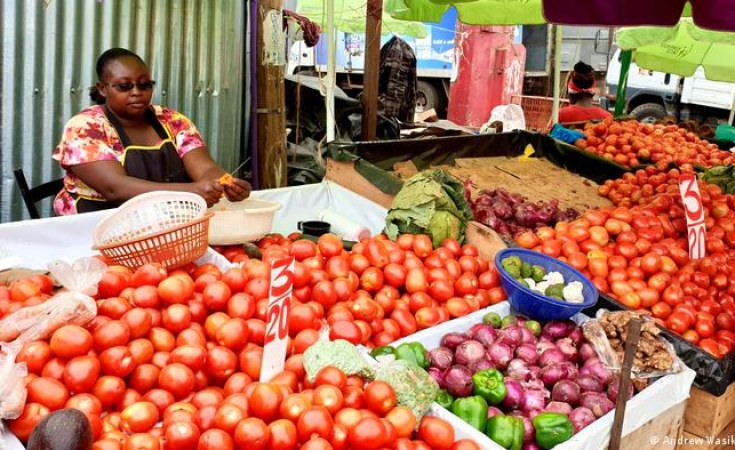Achieving environmental goals is embedded in FAO's work
Agriculture has been around for more than 10 000 years. In that time, it has not only given us food, shelter, and livelihoods, but also knowledge, traditions, innovations and ecosystem services. However, with many ecosystems pushed beyond their capacity, agriculture now needs to provide all these benefits - and more - while being more responsive to the environment.
Without heeding our natural resources and respecting the environment, we put food and agriculture at risk. That is why FAO has always been at the forefront of supporting producers of food and other rural products while safeguarding our planet. From the 1972 Stockholm Conference to this day, FAO has championed environmental improvements in agrifood systems, focusing on the conservation and sustainable management of agricultural lands, forests, in-land water and ocean resources.
But we're not stopping there! A Better Environment is one of our key action areas over the next decade.
Here are five ways in which FAO is working to create a better, more innovative and resilient environment:
1. Promoting a sustainable and circular bioeconomy
At the level of the United Nations, FAO is leading the drive towards a sustainable and circular bioeconomy, which involves using biological resources, processes and innovations to help make agrifood systems more sustainable and resilient, while supporting the development of a fair and green economy and ensuring all global citizens have access to enough nutritious food. A sustainable and circular bioeconomy is at the vanguard of game-changing improvements in agrifood-related areas including microbiome science, alternative proteins, biopesticides, circular waste management and ecosystem restoration.
2. Managing agricultural plastics pollution
FAO is transforming the way we use plastics in agriculture. A recent ground-breaking FAO report revealed for the first time that plastic pollution in terrestrial ecosystems is likely far greater than that of aquatic ones. The report outlined several solutions to deal with the problem, based on a 6R approach (Refuse, Redesign, Reduce, Reuse, Recycle and Recover), while also identifying potentially harmful agricultural plastic products that should be withdrawn as a matter of priority. FAO is now working with countries to propose technical guidance to cover all aspects of plastics management throughout agrifood value chains.
3. Ensuring environmental and social safeguards
Did you know that FAO ensures that all of its project and programmes go through a thorough assessment before implementation so that they embed sound environmental and safety outcomes in their design? In 2021 alone, FAO reviewed 667 of its projects based on environmental and social management guidelines, which strike a balance between protecting and sustainably using natural resources and meeting society's growing needs for food, nutrition and decent and resilient livelihoods.
4. Providing open access, environmental and climate data
Agrifood systems will need to become increasingly resilient to mounting challenges, including a growing population with changing food habits, ecosystem degradation and climate change. FAO's transformative Hand-in-Hand Geospatial Platform provides a treasure trove of environmental data related to agroecology, water, land, soils, greenhouse gases, and more. These data are key to identifying climate- and other environment-risk hotspots and to designing tailor-made solutions for countries and regions most in need. FAO will also soon launch a Climate Risk Toolbox to bolster resilience by providing 65 layers of open access data to ensure that all agrifood stakeholders can fully identify and address climate risks.
5. Preserving agricultural heritage and surrounding environments
For 20 years, FAO has recognised sites around the world that combine remarkable landscapes with traditional knowledge of resilient and sustainable management of land and natural resources. These sites, designated as Globally Important Agricultural Heritage Systems (GIAHS), act as an interface between humans and the environment, embodying the idea of "dynamic conservation", where traditional practices, food provision and environmental protection go hand in hand. From the Rice-Fish-Duck System in China and Andean Agriculture in Peru to agroforestry on the slopes of Mount Kilimanjaro, Tanzania and the Soave Traditional Vineyards in Italy, all GIAHS sites are characterized by their commitment to agrobiodiversity, food and livelihood security, traditional knowledge and value systems and social organizations. There are now over 60 GIAHS sites in over 22 countries worldwide.
For decades, FAO has been broadening its global role in environmental stewardship in food and agriculture: developing codes of conduct on the responsible management of pesticides, fertilizers, forestry and fisheries and voluntary guidelines on the responsible governance of tenure of land, fisheries and forests; co-establishing with United Nations Environment Programme (UNEP) the Rotterdam Convention, designed to protect human health and the environment from certain hazardous chemicals; installing the Africa Real Time Environmental Monitoring Information System (ARTEMIS); and adopting the Treaty on Plant Genetic Resources for Food and Agriculture, among many other initiatives.
Furthermore, it is estimated that restoring 350 million hectares of degraded land between now and 2030 could generate USD 9 trillion in ecosystem services and remove an additional 13-26 gigatonnes of greenhouse gases from the atmosphere. This cannot be done without the support of all actors throughout the global agrifood value chain, which is why FAO is proud to co-lead with UNEP the UN Decade on Ecosystem Restoration.
The future of agrifood systems and the future of our environment are intertwined. Now is the time to bring about transformative change - let's make our actions count!


